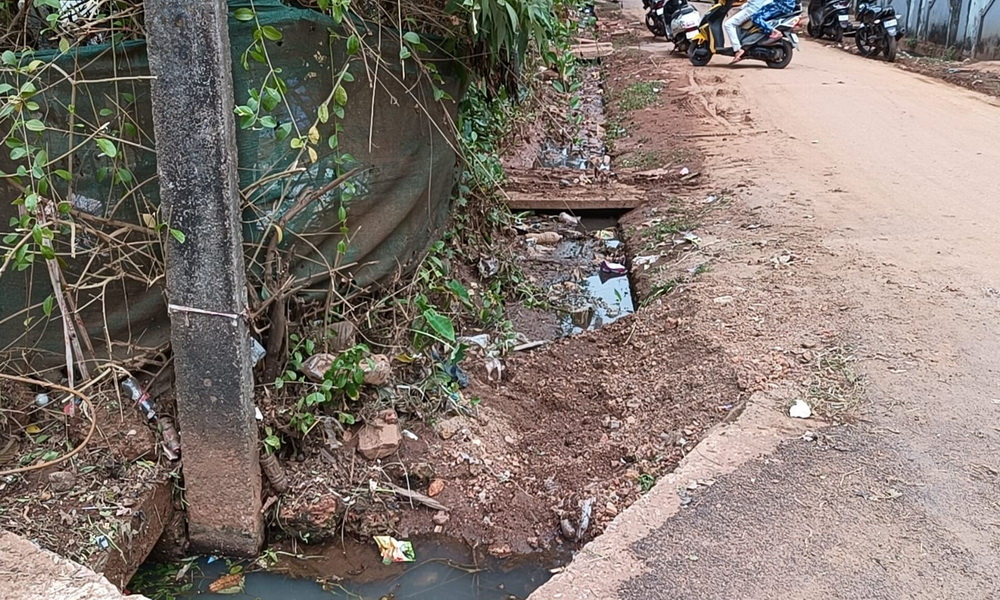
Bhatkal: The rainy season is approaching, and like every year in Bhatkal, the roadside drains meant for rainwater drainage are filled with mud, stones, and garbage. This has resulted in pre-monsoon rainfall causing water to overflow from the drains and enter houses and shops in many areas instead of flowing through the drains.
In urban areas, there is the TMC (Town Municipal Council) and in rural areas, there are Gram Panchayats and Patan Panchayat responsible for these matters. However, the situation remains the same across TMC, Gram Panchayat, or Patan Panchayat. Every year, millions of rupees are spent on cleaning the drains and constructing new ones before the rainy season. Contractors' bills are also paid, but in reality, this work remains half-finished. In some areas, the work of cleaning the drains continues even till half of the monsoon season is over. And when there is heavy rain, people have to bear the consequences.
If we talk about Bhatkal TMC, there are a total of about 90 km of roads within its limits. Even if we calculate half of it, there should be at least 45 km of drains. But if we check the city, it turns out that in many places, either the drains have not been constructed, or if constructed, they are filled with soil, garbage, and debris from construction materials to such an extent that the drains are completely covered. Forget about rainwater, even drops of water cannot pass through these drains on normal days.
If you look at the Jali Patan Panchayat area, there are a total of 65 kilometers of roads. There are 181.5 km of drains in this area. But the condition of these drains is no different from the urban area. The drains are full of dirt, garbage, and mud, causing the same obstacles in the way of drainage of dirty and rainwater. Similarly, the 5 km long National Highway, which has about 10 km of water drainage channels, also faces the same condition. No one looks into it, making it difficult to predict what is filled in these channels.
Drain Cleaning and Rainy Season: It is a strange situation that the drain cleaning campaign in TMC and Panchayat areas is linked only to the rainy season. However, according to the rules issued by the state government, the cleaning of drains should be done continuously and from time to time. As soon as the rainy season ends in October, it is mandatory to carry out the work of removing garbage from every area and cleaning the drains. But what happens is that a month before the rainy season, the tender for cleaning the drains is given to contractors. Some places are cleaned, in some places, the garbage is removed from the drains and left on the roadside, and in some places, the contractors collect their money and leave the work unfinished. The TMC and Panchayat officials then forget about the rainwater drains until the next rainy season. The interesting thing is that when officers are questioned in this regard, they have the same dull answer: the work is not being done due to a lack of workers and staff.
A fund of Rs 12.5 lakh has been allocated in the TMC this year for cleaning the drains before the rainy season. The tender for this has been approved, and the contractor has started the work. Similarly, in Jali Patan Panchayat, Rs. 3 to 4 lakhs are allocated every year for the cleaning of drains, and it is said that cleaning work is being done here as well. It should be noted that for the last ten to twelve years, the people here are already worried due to the failure of the Underground Drainage (UGD) System. In the pre-monsoon, if it rains, the water flowing from the drains starts flowing on the roads, including the water from the UGD. Then this water starts entering houses and shops in some places. Now the monsoon will start in the next week, so it is obvious that the matter will become so complicated that people will be forced to think about where the millions of rupees are flowing.
